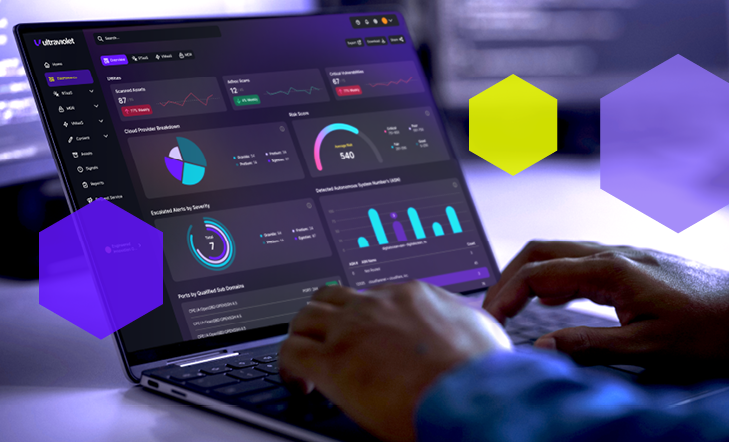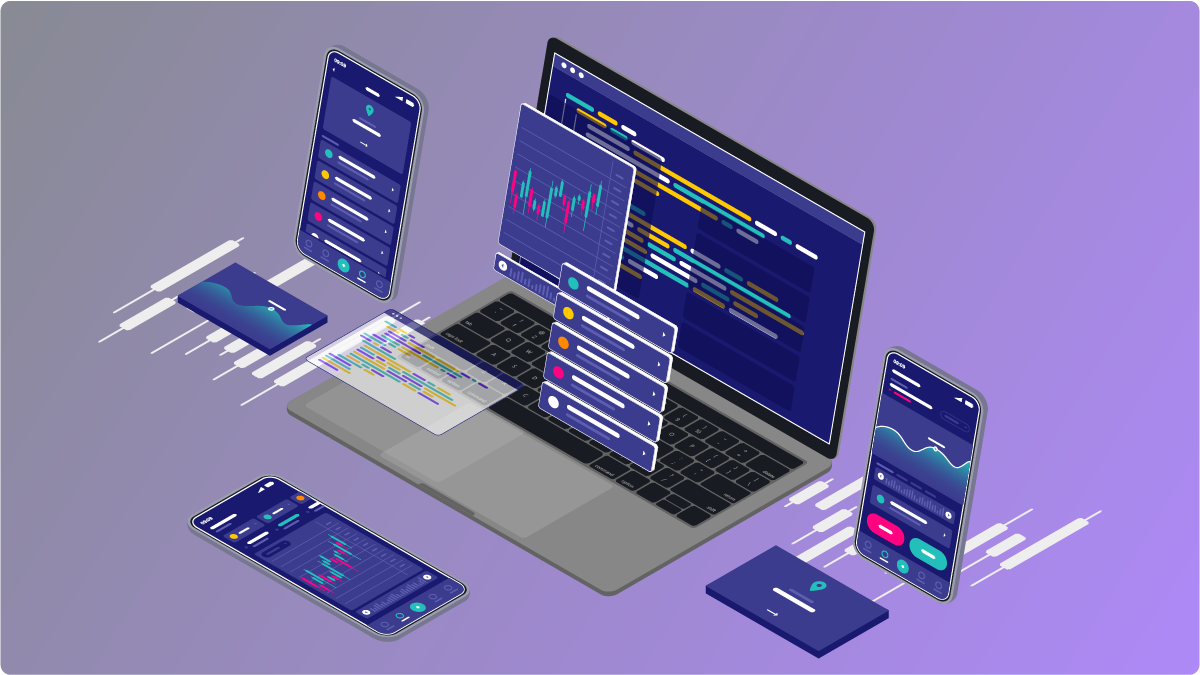
Managed Detection and Response (MDR)
Simply generating alerts is not enough to thwart your adversaries. For true protection, shift to focusing on outcomes... at machine-speed!
Find flaws in web, mobile, and IoT applications.
Expose risks in AWS, Azure, and GCP environments.
Ongoing testing to catch real-world vulnerabilities as they appear.
Live-fire exercises to sharpen detection and response.
Time-boxed security assessments across networks, apps, and infrastructure.
Simulated attacks to test detection and incident response.
Named security experts integrated seamlessly into your team.
Real-time detection and automated threat response.
24x7 monitoring and response by expert analysts.
Nonstop scanning to prioritize and reduce risk.
Ongoing scanning, triage, and compliance tracking.
Unified security platform powering all UV services.
Cross-platform toolkit for advanced red team ops.

Secure your code, infrastructure, and deployment pipelines before attackers exploit them.
September 19, 2025
August 27, 2025
June 26, 2025
UltraViolet Cyber is a practitioner-led MSSP delivering offensive and defensive security to Global 2000 and Federal clients. Built by former intelligence operators, we unify application security, red teaming, detection, and engineering under one roof. Our UV Lens platform replaces silos with integrated, outcome-driven operations.
UltraViolet Cyber
May 1, 2025
Security teams today are swimming in telemetry. From endpoints to cloud workloads to SaaS applications, the sheer volume of logs, alerts, and signals has exploded. And yet, many SOCs are still tethered to manual detection processes, rigid playbooks, and tooling that struggles to scale with the demands of modern infrastructure.
As environments grow more dynamic, attackers continue to adapt faster than traditional defenses can keep up. Rules are written, tweaked, and rewritten again, often in isolation, without clear audit trails or repeatable logic. Alert fatigue sets in. Detections miss critical signals or fire too often to trust. And the SOC becomes reactive instead of resilient.
Detection-as-Code offers a new path forward. It borrows from modern software engineering, treating detection logic like source code: version-controlled, tested, automated, and built to scale.
In this guide, we’ll unpack what Detection-as-Code really means, how it works in practice, and why it’s becoming an operational pillar for leading security teams, including those in highly regulated and federal environments.
At its core, Detection-as-Code means treating detection logic like software code. Instead of manually configuring rules in a UI or chasing alerts in isolation, you define threat detection rules using structured, version-controlled code that can be tested, reviewed, and deployed consistently across environments.
It’s built on three key principles:
By codifying detections, teams gain visibility into what’s being monitored, why it’s triggering, and how to adapt quickly when adversaries evolve. It also brings consistency across security stacks, especially critical when operating in hybrid environments or managing multiple toolsets.
Ultimately, Detection-as-Code is about moving from reactive rule tuning to proactive engineering. It gives SOC teams the same kind of structure, automation, and reliability that development teams rely on to ship software.
Traditional SOC workflows rely heavily on manual processes, writing one-off detections, tuning alerts by trial and error, and hoping changes don’t break something downstream. That approach doesn’t scale. Especially not when security teams are drowning in alerts and expected to respond in minutes.
Detection-as-Code changes that by applying proven software engineering practices to security operations, including:
This approach not only speeds up how fast new detections go live, but also improves their quality. You can run tests against real telemetry, simulate attacker behavior, and validate that your logic actually works before it hits production.
It also means security teams can move away from a patchwork of custom scripts and vendor-specific rules. By standardizing on frameworks like Sigma, detections become portable, scalable, and easier to manage across SIEMs, EDRs, and cloud-native tools.
In practice, codifying the SOC means fewer false positives, faster deployment of high-confidence alerts, and a foundation that enables automation - not just in detection, but in response.
To understand how Detection-as-Code works in practice, let’s walk through a real-world scenario that security teams encounter often: a cloud misconfiguration that exposes sensitive infrastructure.
Imagine a customer integrates their AWS environment with UltraViolet Lens, the UltraViolet detection platform. A CIS benchmark scan identifies an S3 bucket with a misconfigured policy — allowing public access when it shouldn’t. That’s a potential data exposure risk.
Here’s where the codified approach takes over:
All of this happens in near real-time, at machine speed, without waiting for a manual analyst workflow or a once-a-quarter audit.
This scenario isn’t hypothetical. It’s how UltraViolet leverages microservices and stream-based processing within its UV Lens platform to move from detection to response in seconds. The goal: reduce dwell time, eliminate alert fatigue, and enable SOC teams to focus on what matters.
Writing detection logic is only half the battle. The real question is: does it work when it really matters?
Many SOCs rely on attack ranges or static log datasets to validate new detections. While useful, these methods fall short in one critical way: they don’t reflect the real behavior of your environment. Static logs don’t capture system nuances, log normalization quirks, or the variability of real user activity. That’s where overfitting and false positives creep in.
UltraViolet takes a different approach: adversary emulation in live environments.
Instead of testing detections against canned data, UltraViolet engineers simulate real attacker behavior in controlled environments using known TTPs. These actions generate fresh telemetry, which is then used to validate whether a detection fires correctly and, if it misses, why.
This method has three big advantages:
Think of it as an operationalized feedback loop between red and blue teams. It’s how UltraViolet builds confidence in detections before they ever go live.
Detection is only part of the equation. What you do after the alert fires is just as critical. And that’s where codified response comes in.
Security Orchestration, Automation, and Response (SOAR) platforms have been around for years. Modern SOAR playbooks are often visualized in drag-and-drop UIs. But the underlying value lies in how those workflows are represented: as version-controlled, modular steps that can be reviewed, tested, and improved like code. The most effective playbooks are both visual and codified, offering flexibility without sacrificing structure.
Codified response changes that by turning playbooks into structured, version-controlled steps that can be consistently audited and improved.
Here’s what that looks like in action:

Each step is traceable, testable, and consistent. If something breaks, you can fix the code. If requirements change, you modify a line and commit a new version.
Not everything needs to be hands-off. This modular, microservice-based approach also allows selective automation. Human-in-the-loop workflows are easy to insert, giving analysts control where it matters and speed where it doesn’t.
The result? Faster, more reliable response. Fewer manual tasks. And a SOC that doesn’t just detect threats, but reacts to them with precision and consistency every time.
Threat hunting has traditionally been more art than science, dependent on the intuition and experience of individual analysts. But as environments grow more complex, ad-hoc hunts have difficulty scaling. What’s missing is structure, repeatability, and collaboration.
Detection-as-Code brings that structure by turning threat hunting into a codified, transparent process.
At UltraViolet, threat hunters use tools like Jupyter Notebooks to document and execute hunts in real time. Not just with queries, but with logic that can be reviewed, reused, and refined. These notebooks allow analysts to:
Threat hunters also benefit from a library of reusable content — pre-built templates, enrichment functions, and data access modules. These components live as code and are continuously improved across the team, helping hunters move faster while maintaining consistency and auditability.
Even more powerful, these notebooks can be version-controlled, integrated into CI/CD pipelines, and even used to generate new detection logic. When a hunt surfaces suspicious behavior, a Sigma rule can be written, validated, and deployed, closing the loop from hypothesis to protection.
For SOC leaders, this means less duplication of work, higher analyst productivity, clear audit trails for investigations, and a more measurable way to track hunt effectiveness.
Codified hunting enables your analysts to work smarter and ensures their insights don’t disappear when they log off.
Detection-as-Code brings speed, consistency, and scale to security operations, but it’s not a silver bullet. Like any engineering effort, it’s only as good as the people, processes, and mindset behind it.
At UltraViolet, here’s what we’ve seen in the field:
Detection-as-Code represents a shift from reactive alert tuning to proactive, engineer-driven security. One where detections are transparent, testable, and built to scale. Where SOCs move with the speed of code, not tickets. And where detection, validation, and response are tightly integrated, not loosely connected steps in a workflow.
This approach is already being adopted by organizations with complex compliance requirements, segmented environments, and high-trust stakeholders, including federal agencies and regulated enterprises.
The real opportunity here is resilience. Detection-as-Code gives teams the tools to:
It’s a practical strategy for modern security operations, one rooted in engineering discipline, not just automation hype.
At UltraViolet Cyber, Detection-as-Code is baked into how we operate.
We’ve built our Managed Detection and Response (MDR) and SOC services around the idea that detections should be engineered, not just managed. That means everything from initial rule creation to validation, deployment, and response is designed with codified workflows in mind.
Here’s how we do it:
Whether you’re running a Federal SOC, managing detection across hybrid environments, or simply looking to modernize your response workflows, Detection-as-Code is a proven, scalable strategy. And it’s one we live every day.
Want to explore how Detection-as-Code could work in your environment? Let’s start a conversation.
We’re here to help. Get in touch for an initial conversation with one of our security experts and learn more about how UltraViolet Cyber can help you take cyber readiness and resilience to new levels.